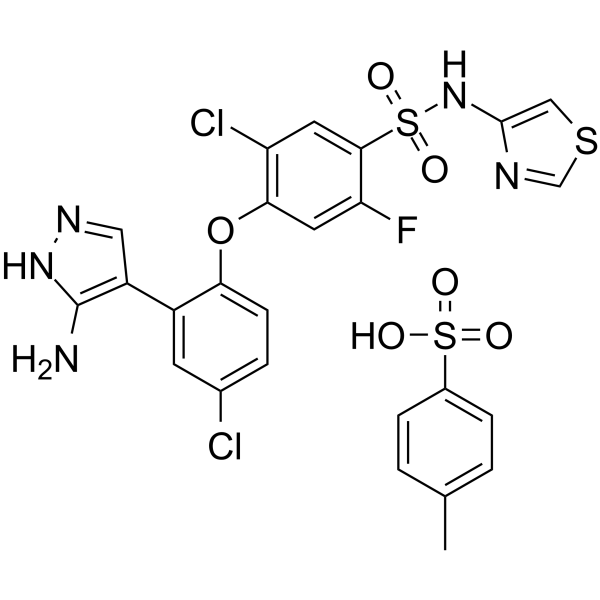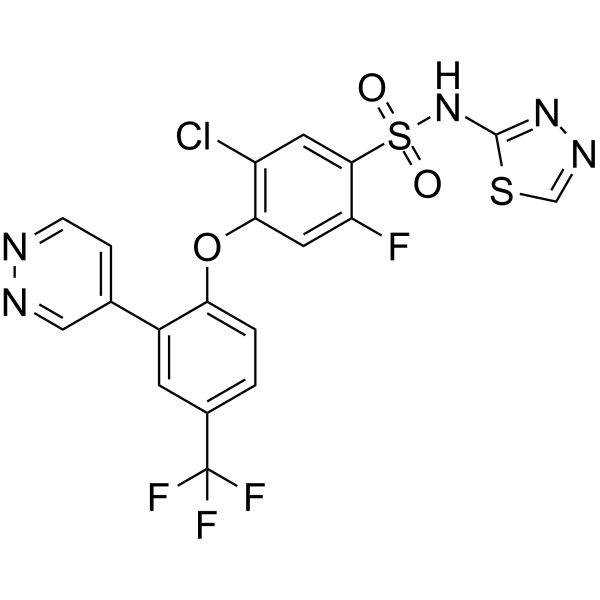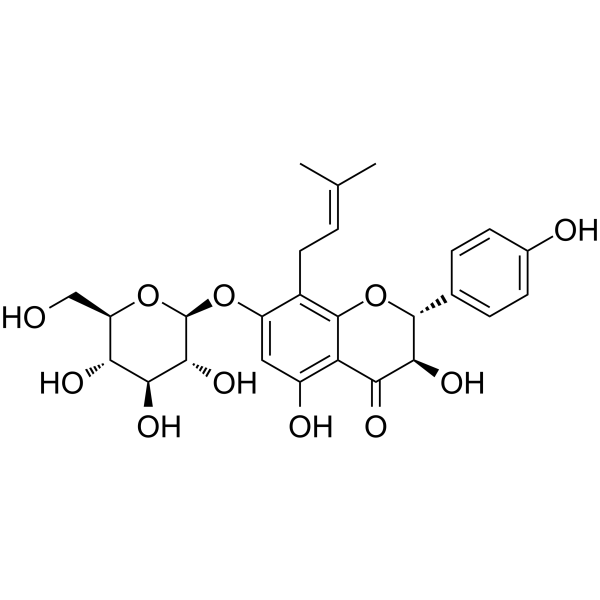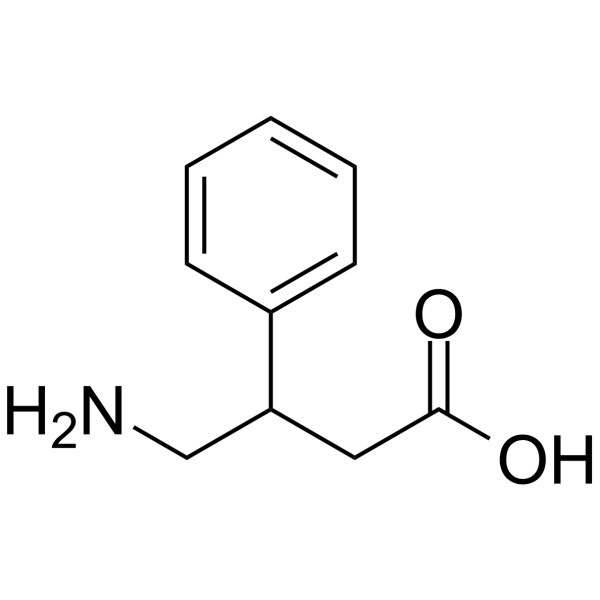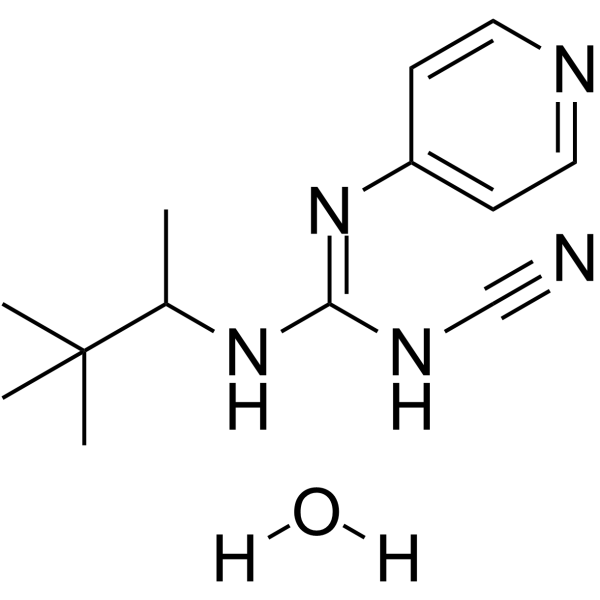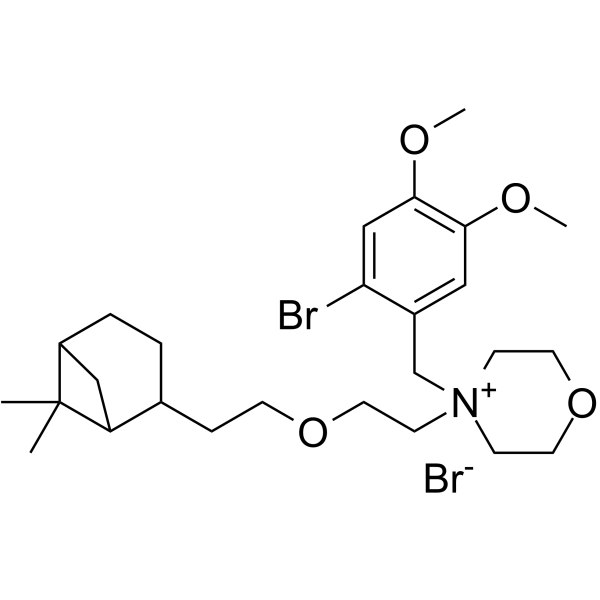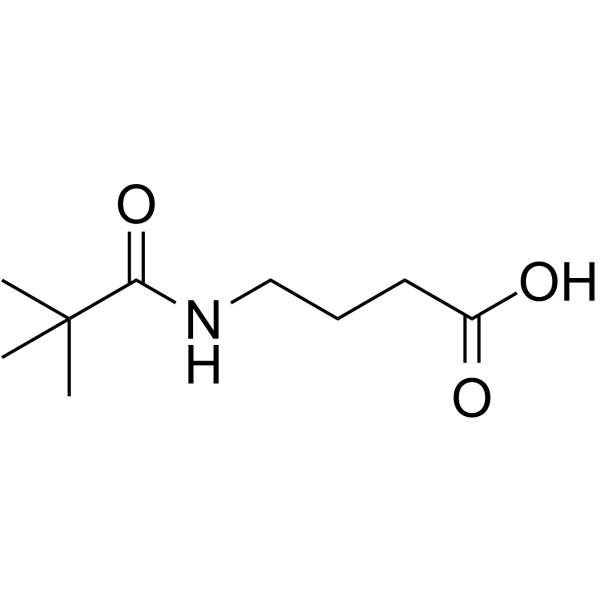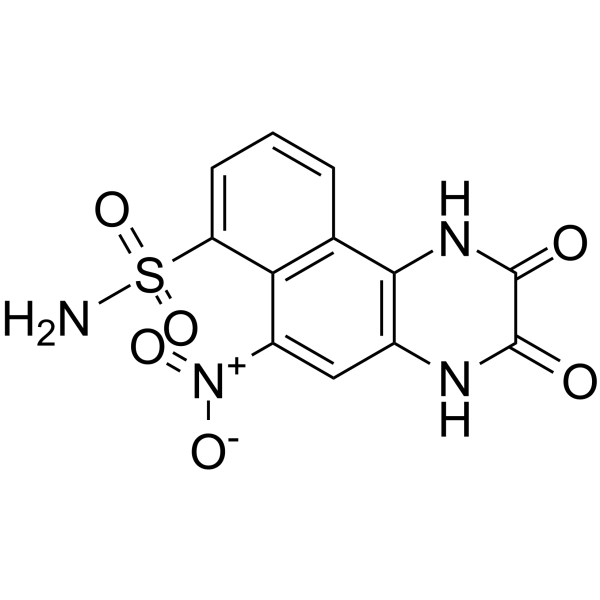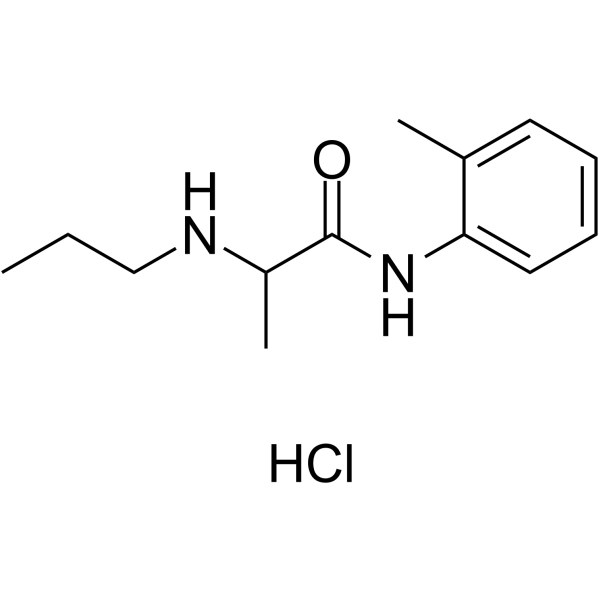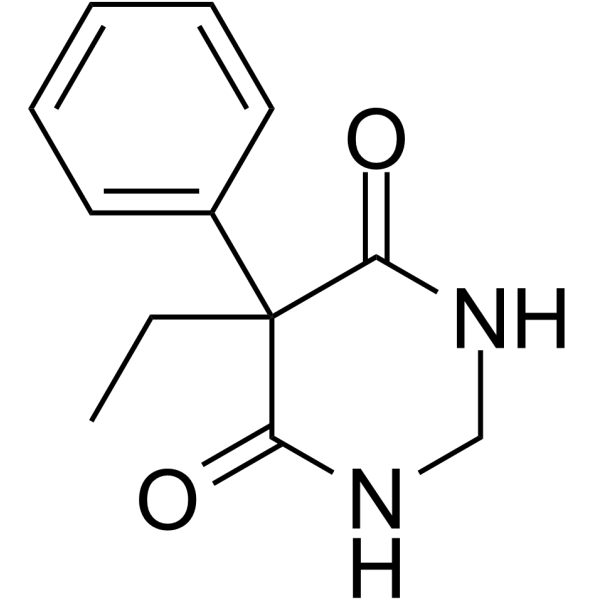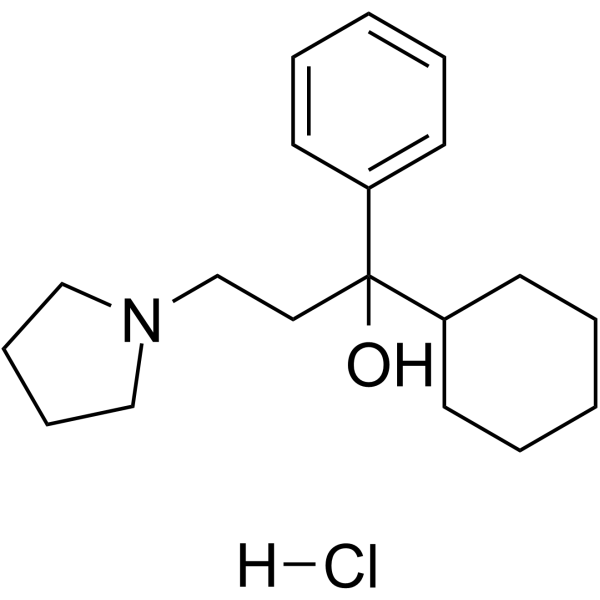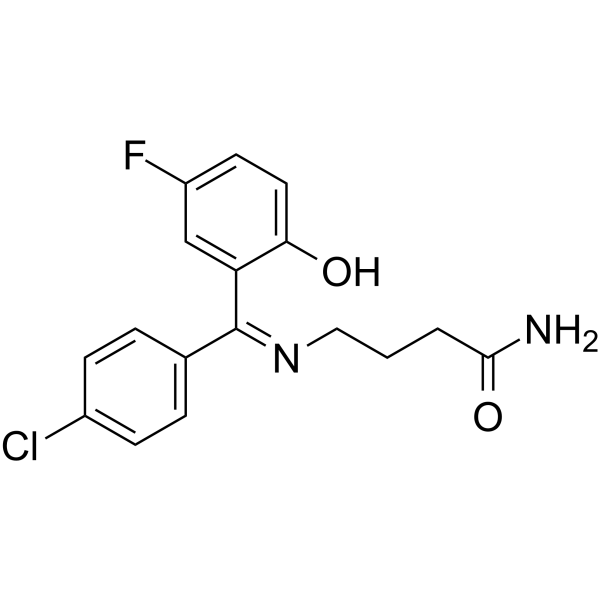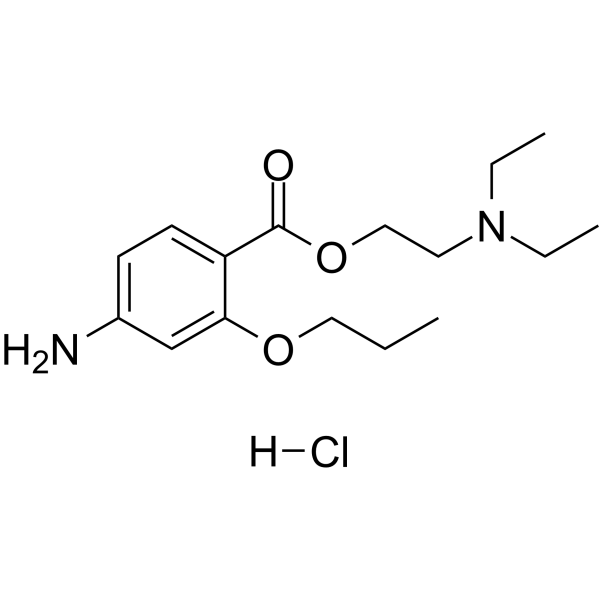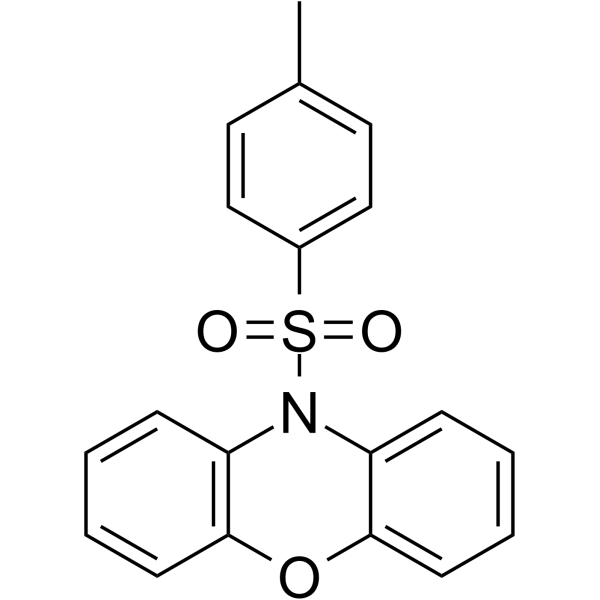|
BP16121
|
PF 03716556
|
|
|
|
|
PF 3716556, an effective and specific P-CAB (potassium-competitive acid blocker), is utilized for the treatment of gastroesophageal reflux disease.
|
|
BP16122
|
PF 05089771 tosylate
|
|
|
|
|
PF-05089771 is a voltage-gated sodium channel 1.7 (Nav1.7) blocker (IC50: 11, 16, 33, and 20 nM for 5N11S, 5A11L, 5A11S, and 5A11L Nav1.7 splice variants, respectively). It is selective for Nav1.7 over Nav1.1-1.6 and 1.8 channels (IC50: 0.11-25 μM), L-type calcium, and KvLQT and hERG potassium channels (IC50: ≥10 μM), as well as human and cynomolgus monkey TRPV1 receptors (IC50: 10/20 μM). PF-05089771 is also 1, 000-fold selective for half-inactivated over resting Nav1.7 channels, and mutation of the domain IV voltage-sensor domain (VSD4) reduces PF-05089771 potency by approximately 100-fold.
|
|
BP16123
|
PF-05186462
|
|
|
|
|
PF-05186462 is a potent, state-dependent, subtype selective Nav1.7 inhibitor with IC50 of 21 nM, no significant activity against Nav1.5.
|
|
BP16124
|
Phellamurin
|
|
|
|
|
Phellamurin inhibits intestinal P-glycoprotein in a dose-dependent manner, there is a serious interaction occurred between Phellamurin with cyclosporin, to ensure the efficacy of cyclosporin, we suggest that the coadministration of Phellamurin or Phellodendron wilsonii with cyclosporin should be avoided.
|
|
BP16125
|
Phe-Met-Arg-Phe, amide acetate
|
|
|
|
|
Phe-Met-Arg-Phe, amide acetate dose dependently (ED50=23 nM) activates a K+ current in the peptidergic caudodorsal neurons. This peptide appears to localize with neuropeptide Y in some regions of the brain.
|
|
BP16126
|
Phenazopyridine hydrochloride
|
|
|
|
|
Phenazopyridine Hydrochloride is used orally as a urinary tract analgesic. Side effects of phenazopyridine hydrochloride administration can include nausea, interference with the oxygen-carrying capacity of red blood cells (methemoglobinemia), hemolytic anemia as well as renal and hepatic toxicity. It is reasonably anticipated to be a human carcinogen.
|
|
BP16127
|
Phenibut
|
|
|
|
|
Phenibut is a central depressant and derivative of the naturally occurring inhibitory neurotransmitter γ-aminobutyric acid (GABA).
|
|
BP16128
|
Pilsicainide HCl
|
|
|
|
|
Pilsicainide HCl is a pure sodium channel blocker
|
|
BP16129
|
Pinacidil monohydrate
|
|
|
|
|
Pinacidil monohydrate is a potassium channel activator, antihypertensive drug.
|
|
BP16130
|
Pinaverium bromide
|
|
|
|
|
Pinaverium bromide is an calcium channel blocker with Antispasmodic and effectively relieves pain, diarrhea and intestinal discomfort.
|
|
BP16131
|
Pivagabine
|
|
|
|
|
Pivagabine is a derivative of hydrophobic 4-aminobutyric acid, with neuromodulatory activity. Pivagabine penetrates the blood-brain barrier in rats. Pivagabine antagonizes the effects of foot shock on both GABAA receptor function and corticotropin-releasing factor (CRF) concentrations in rat brain.
|
|
BP16132
|
Potassium Channel Activator 1
|
|
|
|
|
Potassium Channel Activator 1 can be used in studies about the treatment of disorders or conditions wherein the dopaminergic system is disrupted such as mood disorders ADHD, schizophrenia, and other psychotic states.
|
|
BP16133
|
NBQX
|
|
|
|
|
Potent, selective and competitive AMPA receptor antagonist. Neuroprotective and anticonvulsant; active in vivo.
|
|
BP16134
|
Prilocaine hydrochloride
|
|
|
|
|
Prilocaine hydrochloride is a local anesthetic of the amino amide type, binds to voltage-gated sodium ion channels in the neuronal membrane, thereby preventing the permeability of sodium ions.
|
|
BP16135
|
Primidone
|
|
|
|
|
Primidone is an anticonvulsant of the pyrimidinedione class.
|
|
BP16136
|
Procyclidine hydrochloride
|
|
|
|
|
Procyclidine is a potent anticholinergic agent and also have NMDA antagonist properties.
|
|
BP16137
|
Progabide
|
|
|
|
|
Progabide is an agonist of the gamma-aminobutyric acid receptor.
|
|
BP16138
|
Propoxycaine hydrochloride
|
|
|
|
|
Propoxycaine hydrochloride is an inhibit of voltage-gated sodium channels.
|
|
BP16139
|
PSB-12062
|
|
|
|
|
PSB-12062 is a potent and selective antagonist of P2X4(IC50 of 1.38 μM for human P2X4).
|
|
BP16140
|
p-Tolylmaleimide
|
|
|
|
|
p-Tolylmaleimide is an inhibitor of the water channel and binds to Aquaporin Z.
|

